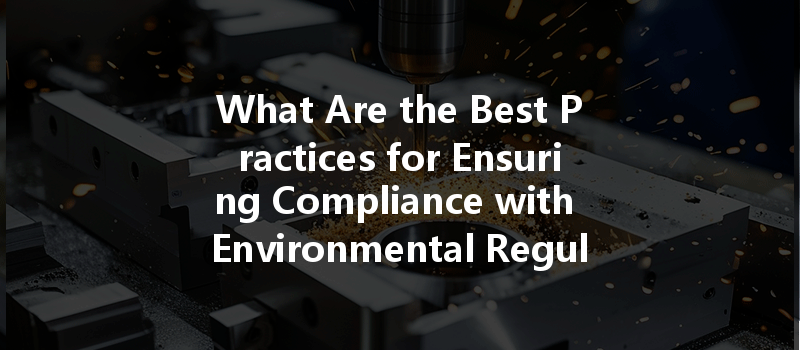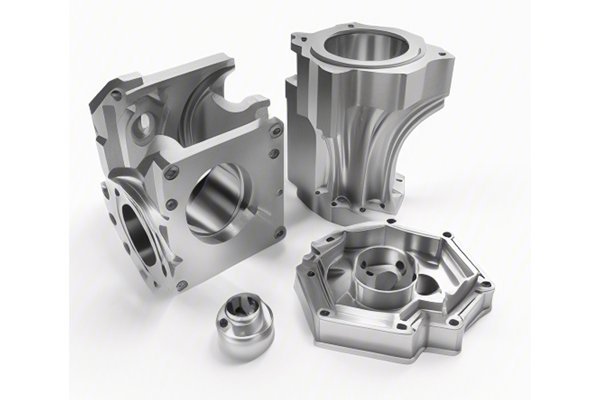Opening
Did you know that the aluminum industry is one of the most energy-intensive sectors, consuming about 8% of the world’s electricity? With the increasing emphasis on sustainable manufacturing practices, it’s vital for companies involved in aluminum CNC machining to navigate the maze of environmental regulations. As environmental legislation becomes more stringent, manufacturers not only have a responsibility to comply but also a competitive advantage to gain by adopting eco-friendly practices. In this blog, we will delve into the best practices for ensuring compliance with these essential regulations and explore innovative strategies to enhance sustainability without compromising productivity or quality.
The Importance of Compliance in Aluminum CNC Machining
Aluminum CNC machining is widely used across numerous industries, including aerospace, automotive, and consumer goods. The process, while highly efficient, can also generate significant waste and emissions. This reality necessitates strict regulatory compliance to ensure both environmental protection and public health.
Non-compliance can lead to hefty fines, legal ramifications, and damage to a company’s reputation. Moreover, with consumers increasingly valuing sustainability in their purchasing choices, being non-compliant could directly affect a business’s bottom line. Therefore, the implementation of sustainable practices not only fosters compliance but can also be economically beneficial.
Understanding Environmental Regulations
Before tackling compliance, it’s vital to understand the types of environmental regulations that may affect aluminum CNC machining.
Best Practices for Compliance
Frequent audits help identify non-compliance issues before they escalate. Companies should develop an internal checklist based on applicable regulations, focusing on emissions, wastewater management, and waste disposal.
An EMS provides a systematic approach to managing environmental responsibilities. It allows manufacturers to track compliance, set goals for reducing environmental impact, and evaluate performance.
Modern CNC machinery often comes equipped with energy-efficient components and systems that significantly reduce emissions and power consumption. Investing in the latest technologies can allow manufacturers to meet and exceed regulatory standards.
Efficiency in machining operations not only cuts costs but can lessen environmental impacts. By optimizing processes, companies can increase output while minimizing waste.

An efficient waste management system that adheres to regulations is crucial. Companies should segregate hazardous waste from non-hazardous waste and ensure proper disposal methods are followed.
Comprehensive training programs for employees on environmental policies, sustainable practices, and compliance responsibilities are essential. Empowering your workforce with knowledge fosters a culture of responsibility.
Establish a relationship with local environmental regulatory agencies. This partnership can offer insights into compliance updates, making it easier to adapt operations accordingly.
Incorporating data analytics in the CNC machining operation can enhance oversight regarding emissions and waste generation. Sensors and software solutions can monitor performance in real-time.
Case Studies of Successful Compliance
Company A: Aerospace Aluminum Machining
Company A, a leading aerospace components manufacturer, implemented an EMS aligned with ISO 14001 and invested in energy-efficient CNC machinery. Following a strict auditing process, they reduced their energy consumption by 30% over two years and improved their compliance scores during environmental inspections. Their commitment to sustainability not only enhanced their regulatory compliance but also attracted new clients demanding responsible manufacturing.
Company B: Automotive Parts Fabricator
Company B specializes in custom aluminum parts for the automotive industry. After conducting a waste management overhaul, they established a comprehensive recycling program that achieved a 75% reduction in waste sent to landfills. By collaborating with local environmental agencies, they also ensured that their practices met evolving regulations, thereby avoiding costly fines while improving their public image.
In summary, ensuring compliance with environmental regulations in aluminum CNC machining is not merely a legal obligation but a strategic necessity that can yield significant long-term benefits for companies. Through regular audits, the development of an EMS, investments in sustainable technologies, continual employee training, waste management, and active collaboration with regulatory bodies, manufacturers can create a sustainable operational framework.
As consumers and industries alike increasingly focus on sustainability, the benefits of these practices extend beyond compliance and into market competitiveness and profitability. By embracing these best practices, companies not only safeguard their operations against regulatory risks but also contribute positively to the environment.
It’s time for engineers, managers, and decision-makers in the CNC machining sector to consider the implications of environmental regulations seriously. Embracing compliance as an integral part of business strategy is an investment towards a sustainable future in manufacturing—a future that we can all be proud of.






